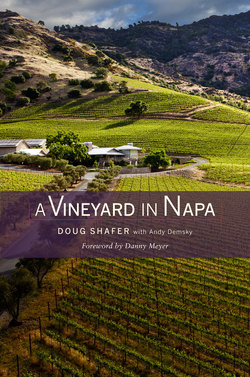Читать книгу A Vineyard in Napa - Doug Shafer - Страница 13
На сайте Литреса книга снята с продажи.
ОглавлениеFOUR
The Pendulum Swings
Home winemakers were allowed to produce as much as two hundred gallons a year for their own consumption during Prohibition. Selling wine grapes to these winemaking operations in basements across the country helped create a decent living for some growers in the Valley. There was a pretty lively illegal alcohol trade as well. According to our neighbor, Frank Perata, who lived on our property as a boy in the 1940s, there is an old moonshine that is still buried somewhere along the creek behind the winery. In addition, when Frank’s father was tearing down a decrepit outbuilding, he found a secret storage area for wine barrels under the floorboards.
Slowly the stars began to align for Napa Valley with the end of Prohibition in 1933. Wine was still almost solely of interest to German and Italian immigrants. This continued to be a beer and whiskey country, so no one here was getting rich but at least making wine couldn’t get you thrown in the slammer anymore.
Toward the end of World War II, the government built a prisoner of war camp along Silverado Trail (near where Conn Dam is located today) complete with barbed-wire fences and a guard tower. Perata remembers that the German POWs were rented out to local growers to tend walnut orchards and vineyards here in Stags Leap.
The war had a bigger effect here than providing cheap labor from the Third Reich; it sparked several things that helped create favorable conditions for a Napa resurgence. The postwar period saw big national economic expansion—the importance of this can’t be underestimated. The gunpowder of every boom is money.
This creation of wealth coincided with an upswing in American interest in wine. Many military men and women who had been stationed in Europe returned home bringing new Mediterranean-inspired food and drink cravings with them.
By the late 1950s and into the 1960s, residents of San Francisco, movie stars, Bay Area connoisseurs, and others started visiting in the Valley in greater numbers to try wines at Robert Mondavi’s new winery and at other places, such as Sutter Home and Louis M. Martini Winery.
By the early 1970s, Napa Valley wine was on the cusp of a very different era. The 1972 harvest garnered the highest prices anyone had ever seen for grapes. The overall crop value was $19.4 million, nearly $2.5 million more than the previous year.1 According to an ebullient Time cover story on California’s soaring wine industry, Napa Valley had “run out of vineyard land.”2 (Not true, but points for enthusiasm.)
Our family was showing up to a party that had just gotten started. However, as we would learn, in spite of all the actual and meta phorical California sunshine, every setback experienced by those first Napa wine pioneers—economic downturns, killer bugs, bad weather, and fickle public tastes—would circle back and challenge us as well.
1. Aldo Delfino, Agricultural Commissioner, 1972 Napa County Agricultural Crop Report, Napa County Department of Agriculture, Napa, CA, 1973, accessed June 28, 2011, www.countyofnapa.org/AgCommissioner/CropReport.
2. Patricia Delaney, “American Wine Comes of Age,” Time, November 27, 1972, 81.
